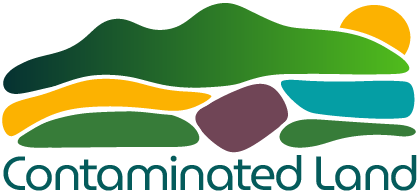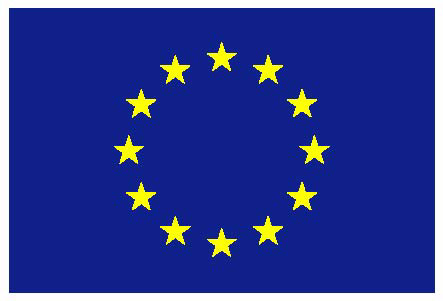NanoRem (Taking Nanotechnological Remediation Processes from Lab Scale to End User Applications for the Restoration of a Clean Environment) was a research project, funded through the European Commission FP7. It focused on facilitating practical, safe, economic and exploitable nanotechnology for in situ remediation. This was undertaken in parallel with developing a comprehensive understanding of the environmental risk-benefit for the use of nanoparticles (NPs), market demand, overall sustainability, and stakeholder perceptions.
The project was designed to unlock the potential of nanoremediation processes from laboratory scale to end user applications and so support both the appropriate use of nanotechnology in restoring land and water resources and the development of the knowledge-based economy at a world leading level for the benefit of a wide range of users in the EU environmental sector.
Aims
NanoRem had the following objectives:
1. Identification of the most appropriate nanoremediation technological approaches that could achieve a step-change in practical remediation performance. Development of lower cost production techniques and production at commercially relevant scales, also for large-scale applications. Model systems (NPs + conditions mimicking real environmental conditions), both existing and novel, were used to investigate mobility, reactivity (destruction, transformation or sorption of contaminants), functional lifetime and reaction products. Potential NP developments and optimisations encompassed size, surface chemistry, structure or formulations. The step-change focus extended the range of practically treatable contaminants, to provide better engineering of mobility and stability, and to produce substantially cheaper and more sustainable NPs, and so widen the functional use of nanoremediation in practice.
2. Determination of the mobility and migration potential of nanoparticles in the subsurface, and their potential to cause harm, focusing on the NP types most likely to be adopted into practical use in the EU. This enabled the assessment of any possible unintended secondary effects of NPs application on environment and ecosystems, and considered both mobility in the subsurface and effects on potential ecological receptors (incl. surface waters).
3. Development of a comprehensive tool box for the design of nanoremediation operations, field scale nanoremediation performance and determination of the fate of NPs in the subsurface, including field measurement devices and methods, decision support tools and numerical models.
4. Provision of dissemination and dialogue with key stakeholder interests to ensure that research, development and demonstration meets end-user and regulatory requirements, and also that information and knowledge is shared widely across the Single Market and that advances in nanoremediation can be properly exploited. An important part of this work was ensuring that research addresses real market and regulatory interests. It was particularly important to be able to consider any potential risks from “unused” nanoparticles after their release into the subsurface (renegades), and to review the relative sustainability of nanoremediation over the life cycle of a typical remediation project.
5. Provision of tests at representative scales to validate cost, performance, and fate and transport findings. NPs were applied into both large-scale contained laboratory systems and field applications, providing on-site validation of the results on a representative scale both in terms of the effectiveness of nanoremediation as well as the environmental fate of the NPs and their associated by-products. All field tests within the project were carried out within a risk management regime for nanoparticle release and subject to a qualitative sustainability assessment comparing nanoremediation with other remediation technologies.
To reach the ambitious goal of establishing nanotechnology as a remediation technology in Europe, the NanoRem consortium was transnational, multidisciplinary and cross-sectoral. It included 28 partners from 12 countries organized in 11 work packages . The consortium included 18 of the leading nanoremediation research groups in the EU, 8 industry and service providers (including 7 SMEs) and one organisation with policy and regulatory interests (Project Partners Listing). It also has an international Project Advisory Group (Project Advisory Group).
Nanoparticles for Environmental Remediation
Please note that this project was completed in 2017 and some of the links and email addresses may no longer be valid.
| Particle Name | Type of Particle | Manufacturer | Website | Process of Contaminant Removal | Target Contaminants | Development Status | Contact Person | |
|---|---|---|---|---|---|---|---|---|
| Carbo-Iron® (industry) | Composite of Fe(0) and activated carbon | ScIDre GmbH, Germany | carboiron.de | Adsorption + Reduction | Halogenated organics (contaminant spectrum as for NZVI) | Field tested and commercially available | R. Schöndube | sd.@scidre.de |
| FerMEG12 | Mechanically ground nZVI particles | UVR-FIA GmbH, Germany | uvr-fia.de | Reduction | Halogenated hydrocarbons | Field tested and commercially available | A. Kamptner | Kamptner@uvr-fia.de |
| NANOFER 25S | Nano scale zero valent iron (nZVI) | NANO IRON s.r.o., Czech Republic | nanoiron.cz | Reduction | Halogenated hydrocarbons and heavy metals | Field tested and commercially available | J. Slunský | slunsky@nanoiron.cz |
| NANOFER STAR | Air stable powder, nZVI | NANO IRON s.r.o., Czech Republic | nanoiron.cz | Reduction | Halogenated hydrocarbons and heavy metals | Field tested and commercially available | J. Slunský | slunsky@nanoiron.cz |
| Nano-Goethite | Pristine iron oxides stabilized with HA | University of Duisburg-Essen, Germany | Technical Sheet | Oxidation (catalytic effect on bioremediation) + Adsorption of heavy metals | Biodegradable (preferably non-halogenated) organics, such as BTEX; heavy metals | Field tested and commercially available | R. Meckenstock | rainer.meckenstock@uni-due.de |
| Trap-Ox Fe-zeolites | Nanoporous alumosilicate loaded with Fe(III) | UFZ Leipzig, Germany | ufz.de | Adsorbent + Oxidation (catalyst) | Small molecules (depending on pore size of zeolite) - e.g. BTEX, MTBE, dichloroethane, chloroform, dichloromethane | Premarket | A. Georgi, K. Mackenzie | anett.georgi@ufz.de |
| Bionanomagnetite | Produced from nano-Fe(III) minerals | University of Manchester, UK | geomicrobiology.co.uk | Reducing agent and adsorption of heavy metals | Heavy metals, e.g. Cr(VI) | Lab to premarket | J. Lloyd | Jon.Lloyd@manchester.ac.uk |
| Palladized bionanomagnetite | Biomagnetite doped with palladium | University of Manchester, UK | geomicrobiology.co.uk | Reduction (catalyst) | Halogenated substances (contaminant spectrum broader than for nZVI) | Lab and premarket | J. Lloyd | Jon.Lloyd@manchester.ac.uk |
| Abrasive Milling nZVI | Milled iron | Centre Tecnològic de Manresa, Spain | ctm.com.es | Reduction | Halogenated aliphatics and Cr(VI) | Lab | V. Martí | vicens.marti@ctm.com.es |
| Barium Ferrate | Fe(VI) | VEGAS, University of Stuttgart, Germany | vegasinfo.de | Oxidation | BTEX, nitroaromatic compounds (under investigation) | Lab | N. Klaas | norbert.klaas@iws.uni-stuttgart.de |
| Mg/Al particles | Zero valent metals | Adaptation of commercially available particles by VEGAS, University of Stuttgart, Germany | vegasinfo.de | Reduction (reagent) | Halogenated hydrocarbons | Lab | N. Klaas | norbert.klaas@iws.uni-stuttgart.de |
| Nano-FerAl | Composite of Fe and Al | UVR-FIA GmbH / VEGAS, University of Stuttgart, Germany | vegasinfo.de | Reduction (reagent) | Halogenated hydrocarbons | Lab | N. Klaas | norbert.klaas@iws.uni-stuttgart.de |




 This project has received funding from the European Union Seventh Framework Programme (FP7/2007-2013) under grant agreement No. 309517.
This project has received funding from the European Union Seventh Framework Programme (FP7/2007-2013) under grant agreement No. 309517.